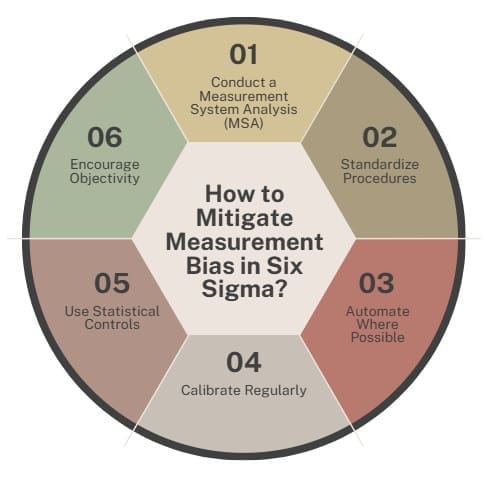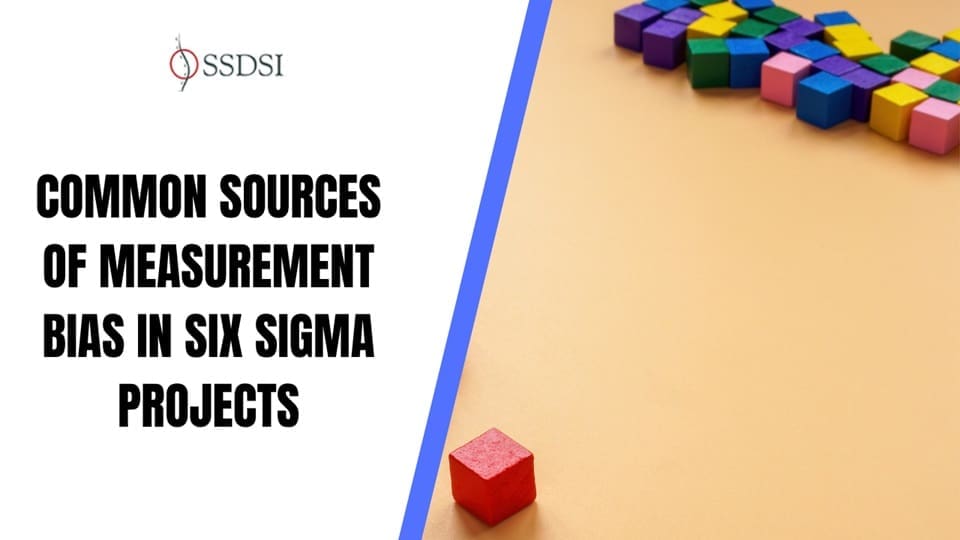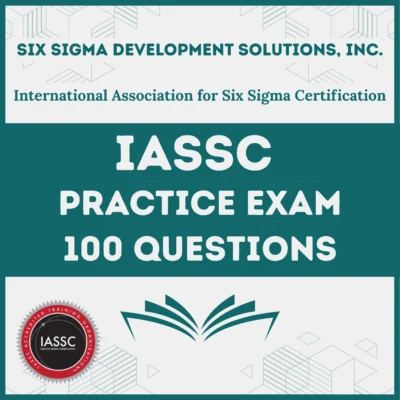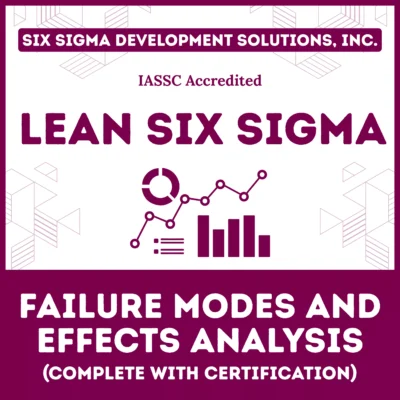Six Sigma projects rely on precision. Data is essential for these initiatives, guiding teams toward process improvements and better outcomes. But what happens when the data is flawed? Measurement bias can sneak into your Six Sigma project, distorting your results and leading you astray. Understanding the common sources of measurement bias is vital for keeping your project on track.
Let’s explore what measurement bias is, where it comes from, and how to address it directly.
Table of contents
What is Measurement Bias in Six Sigma?
Measurement bias occurs when the data collected in a Six Sigma project consistently deviates from the true value. Unlike random errors, which even out over time, bias introduces steady inaccuracies that can distort your analysis, mislead your conclusions, and disrupt your process improvements. In Six Sigma, where the goal is to reduce variation and improve quality, measurement bias acts as a hidden threat.
Think of it like a crooked ruler. If you measure a table with a ruler that’s consistently off by an inch, every measurement will be wrong in the same way. In Six Sigma, this can lead to poor decisions, wasted resources, and missed chances for improvement. So, where does this bias come from? Let’s look at the most common sources.
Human-Related Sources of Measurement Bias
Operator Error
People make mistakes, and that’s acceptable—unless you’re gathering data for a Six Sigma project. Operator error is a frequent source of measurement bias. This happens when the person collecting data misreads instruments, uses tools incorrectly, or applies inconsistent methods. For example, if a technician measures product dimensions but rounds numbers differently each time, the data becomes unreliable.
Training is your best defense. Make sure everyone involved in data collection understands the tools and procedures. Regular calibration checks and set protocols can also reduce operator-induced bias.
Subjective Interpretation
Human judgment can complicate things, especially in qualitative measurements. Imagine a quality inspector checking defects on a production line. If their definition of a “minor scratch” varies from day to day or differs from another inspector’s, this creates a bias problem. Subjective interpretation often appears when criteria aren’t clearly defined or when fatigue sets in after long shifts.
To address this, establish clear measurement criteria and use visual aids or reference standards. Regular audits and cross-checks between team members can also help manage subjectivity.
Public, Onsite, Virtual, and Online Six Sigma Certification Training!
- We are accredited by the IASSC.
- Live Public Training at 52 Sites.
- Live Virtual Training.
- Onsite Training (at your organization).
- Interactive Online (self-paced) training,
Instrument-Related Sources of Measurement Bias
Calibration Issues
Your tools are only as reliable as their last calibration. If a gauge, sensor, or scale is inaccurate, every measurement will be questionable. For instance, a pressure sensor that hasn’t been calibrated in months might consistently report higher readings, leading to incorrect process adjustments.
Regular calibration schedules are essential in Six Sigma. Document every calibration, and do not overlook maintenance. Investing in high-quality, reliable instruments also lowers the chance of bias slipping in.
Tool Limitations
Not all tools have the same level of precision. Some instruments simply lack the accuracy needed for specific measurements. For example, using a low-resolution thermometer to measure tiny temperature changes in a chemical process can introduce bias because the tool cannot capture the full range of variation.
Before starting a project, confirm that your tools can handle the requirements. Conduct a Measurement System Analysis (MSA), like Gage R&R, to evaluate the precision and accuracy of your instruments. If your tools don’t meet the standard, upgrade or adjust your measurement method.
Also Read: Measurement System Analysis (MSA)
Process-Related Sources of Measurement Bias
Sampling Bias
How you collect your data matters as much as what you collect. Sampling bias occurs when the sample you measure doesn’t represent the entire process or population. For instance, if you’re analyzing defects in a factory but only collect data from the morning shift, you might miss issues that arise during the night shift.
To avoid sampling bias, use random sampling techniques and ensure your sample size is large enough to capture the process’s full variability. Stratified sampling, where you deliberately include data from different segments (e.g., shifts, machines, or locations), can also help.
Environmental Influences
The environment can affect your measurements. Temperature, humidity, lighting, or even vibrations can impact how tools or processes perform. For example, a scale used in a humid warehouse might give inconsistent readings if moisture disrupts its sensors. Control for environmental factors by standardizing conditions during data collection. If that isn’t possible, factor these variables into your analysis. For example, include temperature as a variable in your statistical models to understand its impact. Data Handling and Analysis Bias
Data Entry Errors
Even the best measurements can be compromised if the data is mishandled. Typographical mistakes, misplaced decimals, or incorrect units can introduce bias during data entry. Imagine a team member accidentally entering “15” instead of “1.5” for a critical measurement. That single error could distort your entire analysis.
Double-check data entries, and whenever possible, automate data collection to cut down on human error. Tools like barcode scanners or direct data logging from instruments can minimize manual input mistakes.
Statistical Bias
The way you analyze your data can also introduce bias. For instance, selectively using data points that support your hypothesis or ignoring outliers can distort your results. In Six Sigma, where statistical accuracy is crucial, improper analysis methods—like the wrong statistical test or misinterpreting p-values—can lead to biased conclusions.
Stick to solid statistical methods and confirm your approach with tools like Minitab or JMP. Peer reviews of your analysis can also catch potential biases before they create problems.
Cultural and Organizational Sources of Bias
Confirmation Bias
Sometimes, bias arises from the team itself. Confirmation bias happens when people collect or interpret data to support their existing beliefs. For example, if a manager thinks a specific machine causes defects, they might focus measurements on that machine while overlooking others, missing the actual issue. Encourage a culture of open-mindedness within your Six Sigma team. Promote questioning assumptions and use root cause analysis tools to maintain objectivity. A diverse team with various perspectives can also help reduce confirmation bias.
Pressure to Meet Targets
Organizational pressure can subtly influence measurements. If a team feels pushed to show “good” results to meet deadlines or satisfy stakeholders, they might unintentionally manipulate data or adjust measurements to fit expectations.
This is especially common in high-stakes projects where bonuses or promotions are involved. Promote transparency and stress that accurate data, even if it’s “bad,” is more valuable than manipulated numbers. Leadership should prioritize process improvement over short-term wins to lessen this pressure.
Also Read: Stability of a Measurement System
How to Mitigate Measurement Bias in Six Sigma?

Now that we’ve identified the usual sources of bias, how can you manage it? Here are some practical steps:
- Conduct a Measurement System Analysis (MSA): Conduct a Measurement System Analysis (MSA): Use tools like Gage R&R to assess the reliability of your measurement system. This helps spot issues with tools, operators, or processes before they influence your data.
- Standardize Procedures: Standardize Procedures: Create detailed, easy-to-follow instructions for data collection. Train everyone involved and regularly check compliance.
- Automate Where Possible: Reduce human error by using automated data collection systems, such as sensors or software that log measurements directly.
- Calibrate Regularly: Keep your instruments in top shape with a strict calibration schedule. Document everything to track performance over time.
- Use Statistical Controls: Keep your instruments in shape with a strict calibration schedule. Document everything to track performance over time.
- Encourage Objectivity: Build a team culture that values honesty over ego. Promote open discussion and challenge assumptions to keep confirmation bias in check.
Final Read
Measurement bias can be a tricky issue in Six Sigma projects, but it can be managed. By recognizing its sources—whether human error, faulty tools, poor processes, or organizational pressures—you can take proactive steps to minimize its effects. The key is to stay alert: standardize your processes, calibrate your tools, train your team, and always question your data.
FAQs on Measurement Bias in Six Sigma Projects
What is measurement bias in Six Sigma?
Measurement bias refers to consistent errors in data collection that cause measurements to deviate from the true value, leading to incorrect conclusions in Six Sigma projects.
How does operator error cause measurement bias?
Operator error occurs when individuals misread instruments, use tools incorrectly, or apply inconsistent methods, leading to unreliable data. Proper training and set protocols can help reduce this bias.
Why is calibration important in Six Sigma?
Calibration ensures that measurement tools provide accurate and consistent readings. Uncalibrated instruments can introduce bias, distorting data and leading to flawed process improvements.
How can I prevent sampling bias in my project?
To avoid sampling bias, use random sampling methods and ensure your sample represents the entire process. Stratified sampling can also help capture variability across different segments.
What tools can help identify measurement bias?
Tools like Measurement System Analysis (MSA), Gage R&R, and control charts can help evaluate the reliability of your measurement system and detect bias early.

About Six Sigma Development Solutions, Inc.
Six Sigma Development Solutions, Inc. offers onsite, public, and virtual Lean Six Sigma certification training. We are an Accredited Training Organization by the IASSC (International Association of Six Sigma Certification). We offer Lean Six Sigma Green Belt, Black Belt, and Yellow Belt, as well as LEAN certifications.
Book a Call and Let us know how we can help meet your training needs.




















